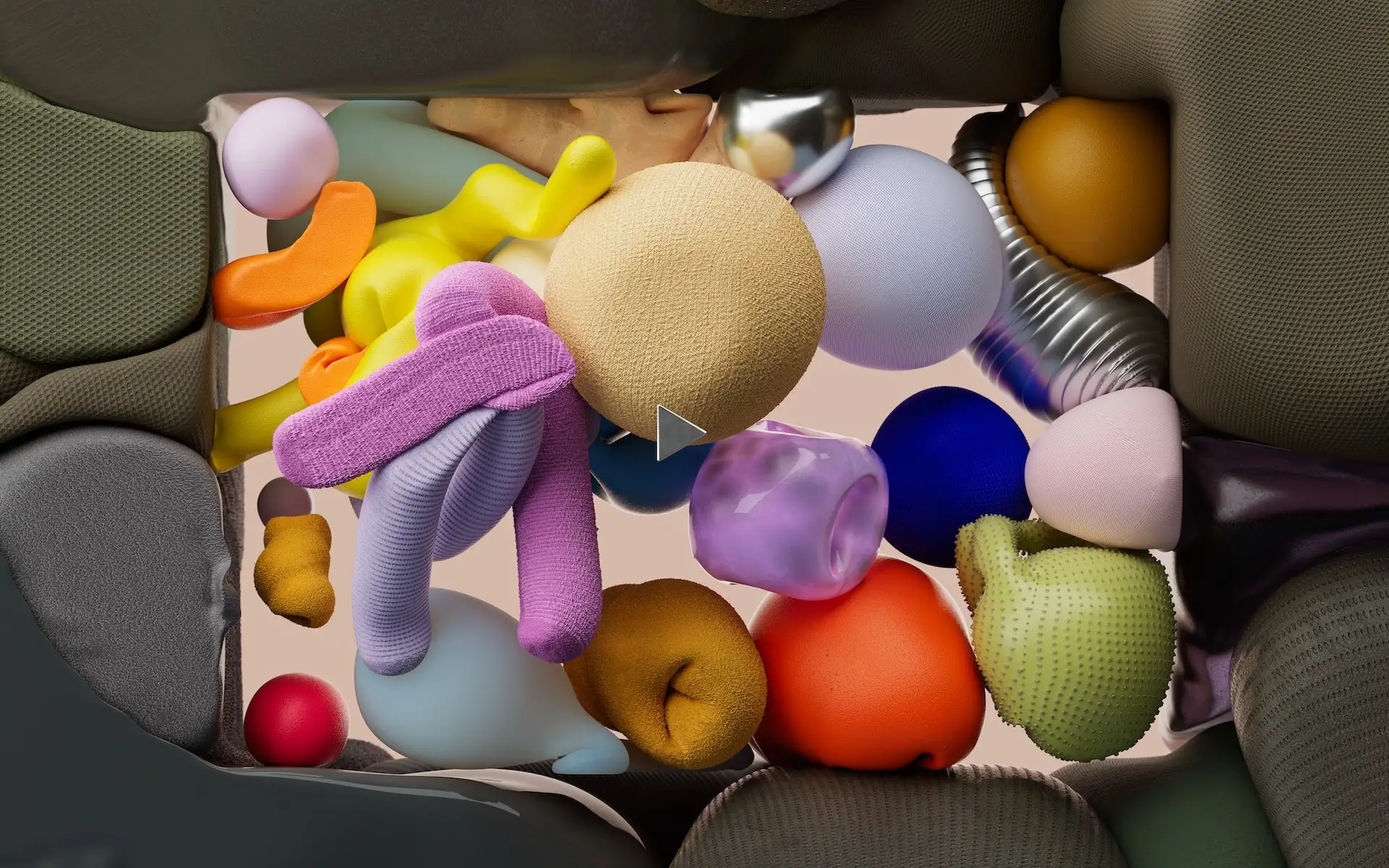Video-to-video AI: What is it and how do you use it?
Video-to-video AI became a hot-button topic in mid-2023. But what is it, how do you use it, and is it right for you?

Since ChatGPT came onto the scene in 2022, artificial intelligence has dominated the conversation around content production. But what’s the deal with video-to-video AI? Let’s find out.
What is video-to-video AI?
You’ve probably heard of text-to-speech or text-to-video AI: you input a detailed text prompt, and the technology takes that idea, runs with it, and generates a response based on different models and reference points. Sometimes, it’ll hit the bullseye. Other times, it’ll try something like Will Smith eating spaghetti.
Video-to-video AI goes one step further, turning a specific source video into another video, based on text- and video-based prompts. Let’s look at how it does that.
How does video-to-video work?
Video-to-video AI works similarly to style transfer algorithms, in which the style of one photo or video is applied to another. Or, to make it even simpler, like a TikTok filter, or even an After Effects template or something on Alight Motion.
But the crucial point is that video-to-video AI doesn’t just overlay a template or idea on top of your video. Rather, it uses your content and the prompt to generate a completely new video.
Usually, you’ll take an existing source video, then input either text or another video/template as your second source. This depends on which software or program you’re using, as their methods and results vary.
For example, you can use a video of someone cycling down a boardwalk, then a video template or text prompt from a Manga cartoon series. The resulting video won’t just be a carbon copy of the first video with effects from your prompt; it will be generated based on the first video, in the style of the prompt.
Need a soundtrack for your video-to-video AI creations? Don’t sweat it. We’ve got more than 40,000 tracks and 90,000 sound effects. Check them out below.

Are there any free video-to-video AI generators?
Creating content with video-to-video AI is a complex process. As such, most programs and apps worth their salt will charge you a fee – usually monthly – to use their services. They’ll usually offer a free trial or reduced beginner price, and if you’re interested, it’ll pay off in the long run.
That said, let’s explore some of the best video-to-video AI programs and apps on the market.
What are the best video-to-video AI generators?
Video-to-video AI is still in its teething phase, but there are plenty of exciting, forward-thinking programs and software out there for you to try. Let’s have a look at a few of them.
Kaiber AI
This is a relatively cheap, web-based video-to-video AI tool, coming in at $5, $10, or $25 dollars per month, depending on your usage. You can also grab a week’s free trial here.
Kaiber is ideal for beginners, too, because it puts in most of the legwork. Just upload your video file, select a template/enter your text prompt, adjust the settings, select your starting frame, then you’re off to the races. You can then edit the video more if required, or download and share it on your usual channels.
Here’s a teaser from Kaiber AI’s TikTok. Tempted?
@kaiberai Build your own neon-soaked world. Experience Motion now.
♬ original sound - kaiber
Stable WarpFusion
Stable WarpFusion goes harder than Kaiber, and surprisingly, it’s priced at a similar $10 point. Why? Well, it’s just one guy and his Patreon page – subscribe there, and you get access to the latest Stable WarpFusion software.
Once downloaded, you can base your video on existing AI models. If you’re willing to put the time in, Stable WarpFusion gives you the option to fiddle with a bunch of settings and prompts.
Check out what YouTuber MDMZ is doing with Stable WarpFusion’s video-to-video AI. Wild.
Runway
Runway is an AI startup with a bucketload of tools. It’s available as a web-based product and through iOS, both of which offer its specialized video-to-video AI tool: Gen-1.
You have to pay to unlock Runway’s full capabilities, which will cost anywhere between $12 and $76 per month, depending on your needs and how often you use it. Still, free users are afforded a ‘Basic’ plan, which gives them a small amount of credits to get a feel for the app.
It works in a similar fashion to Kaiber AI, prompting users to upload a video. Then, you can create your prompt in one of three ways: upload a second video, choose a preset style from Runway’s library, or write your own text prompt. Then it’s just a matter of editing – if you’ve got the full desktop version – and generating your footage. Looks pretty good to us.
So, now that you know what video-to-video AI is, how it works, and which software is readily available, why not get out there and start experimenting? As we covered, this technology is still developing, and we’re sure to see it improve over the next few years. Click here to learn more about AI-generated video content, its practical usage, ethical concerns, and more.
If you’re suited, booted, and ready to go, you’ll need some music for your AI-based video. Let us take care of it – whatever your video-to-video AI program generates, you’ll find the perfect match in with Epidemic Sound.
Our catalog is high-quality, affordable, and safe. An Epidemic Sound subscription goes beyond royalty-free music, removing the headache of licensing and freeing you up to do what you do best. You can enjoy the safety of our license hand-in-hand with our massive catalog of 40,000 tracks, covering just about every genre you can think of. You’ll also gain unlimited access to our advanced search functions — finding the right sound’s never been easier.
It’s better than royalty-free. It’s worry-free. Get started with Epidemic Sound below.

Are you a filmmaker wanting to go pro? We've got you covered with background music for videos, including:
Take your video editing to the next level with our massive catalog of music for filmmakers.

